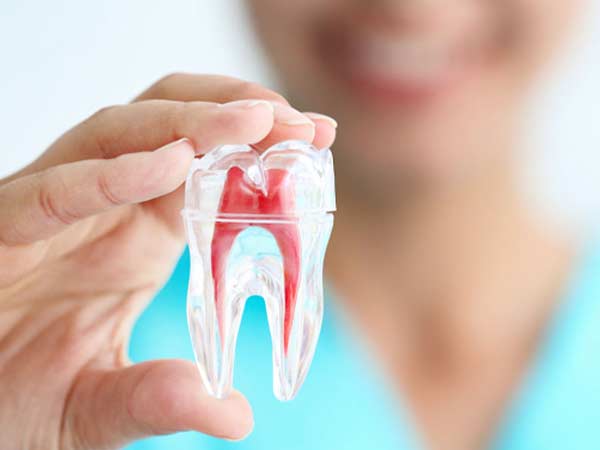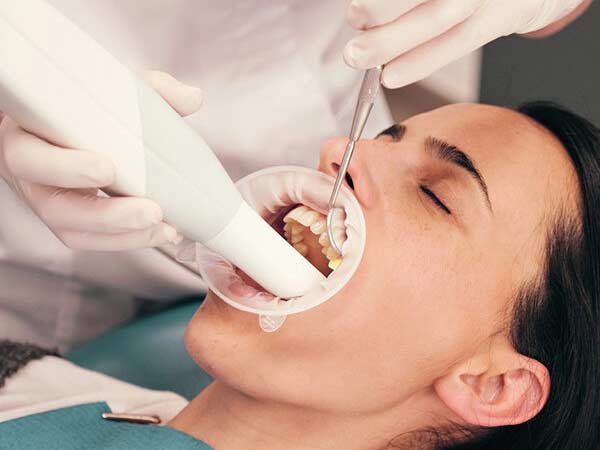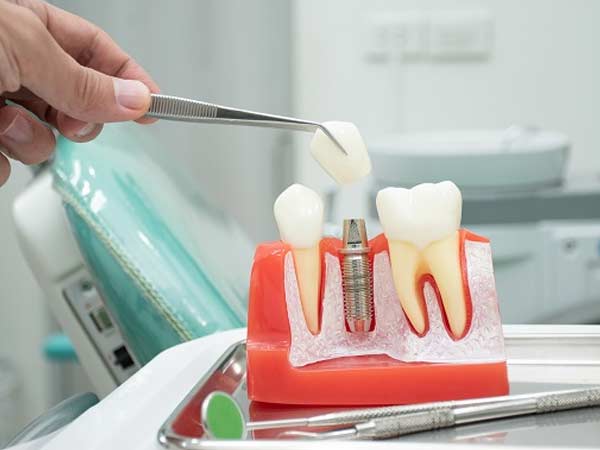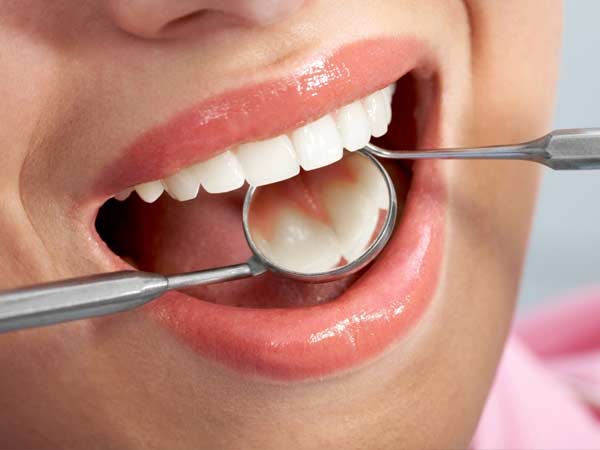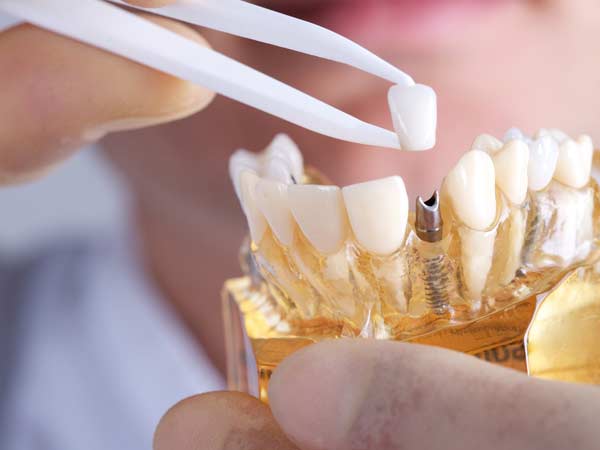VENEERS
Improve the appearance of your teeth with porcelain or composite sheets that mimic the shape and colour of natural teeth.
THIS TREATMENT IS FOR YOU IF…
You want to have a movie smile.

What are veneers?
Veneers are a treatment to improve the appearance of the teeth. It consists of placing porcelain sheets on the front face of the teeth, improving their aesthetic appearance. Veneers give a better appearance in colour and shape to the teeth. In addition, they can also occupy the spaces that are formed with the deterioration of the gums.
The people who usually opt for a veneer treatment are those who want to improve their aesthetic image, especially the colour, shape and position of the teeth. However, not all people are suitable for this type of treatment. A professional should examine your case to make sure you can use them.
Veneers aesthetically help problems derived from pyorrhea or periodontitis, but they are not a health treatment to cure these diseases.
Typically, patients who can undergo veneer treatment are those in good general oral health. It is important to have healthy teeth and gums. It is also important to have enough tooth enamel. Without it, the veneer will not have good retention.
What types of veneers are there?
Veneers are thin sheets that are placed on the front face of the teeth to improve their appearance, and can be made of two different materials: porcelain and composite.
Porcelain veneers
Porcelain veneers, when using this material, have the advantage that they resist stains very well. In addition, porcelain looks very similar to natural teeth when they are healthy and white. This also makes them reflect light much like the original teeth.
In addition, porcelain veneers can correct problems such as tooth wear, as well as cover chipped or broken teeth. They can also cover reconstructed teeth with resin that have become discoloured.
Composite veneers
Composite veneers, a material made from various composite resins, have the advantage that they are reversible. The previous work with the teeth is minimal, so it does not alter them permanently. For this reason, the material can be removed and replaced.
On the other hand, they have the disadvantage that they do not imitate tooth enamel as well as porcelain ones. In addition, as the resin is a porous material, they can stain and are susceptible to chipping or fractures. Although its treatment is much faster and less invasive than porcelain.
Advantages of veneers
Veneers are a treatment that mainly has aesthetic purposes. However, keep in mind that they cannot solve all of them. Depending on the objective, it may be necessary to resort to treatments such as whitening or orthodontics. The advantages and problems that veneer treatment solves are:
- Whiter smile. Veneers can hide severely stained teeth, even those where whitening treatment may not be fully effective.
- Recover the natural appearance of your teeth. In treatments with porcelain veneers, the teeth recover their original colour, and the reflection of light is practically the same as that of natural teeth.
- Recover the shape of your teeth. One of the advantages of veneers is that they can hide small imperfections such as chips, cracks or small fractures in the teeth.
- Minimally invasive treatment. Unlike most dental treatments, veneers are a treatment with which the patient will notice very little discomfort, especially in composite veneers.
- A single treatment for several problems. The veneers allow to solve several coexisting problems. With a single treatment, different difficulties such as slightly crooked, chipped or stained teeth can be solved.
Veneers treatment phases
The treatment of veneers, which are usually made of porcelain, is carried out in five phases that include everything from diagnosis and treatment planning to the placement of the veneers and their final cleaning.
- First of all, to carry out a veneer treatment,a diagnosis is made and then a treatment planning.
In this first phase, the patient’s help is also needed, since he has to be the one who tells the dentist exactly what he wants to achieve with the treatment.
During this process, the dentist will examine the patient’s teeth to ensure that they are suitable for treatment and if it is more appropriate to perform it with porcelain or composite veneers. Also, the dentist will study the implications and possible limitations of it.
- Second, the tooth to be treated will be prepared. This preparation consists of removing part of the enamel from the tooth surface. This removed portion will need to match the amount of veneer thickness that will be added to the tooth.
- Third, impressions will be taken. These impressions are sent to a laboratory
- The fourth step is to place the impressions of the finished veneers. In order to do so, the tooth must be prepared, in a process that consists of cleaning, polishing and engraving the tooth. With this process, it is possible to create a rough surface that allows a strong bonding process between the tooth and the veneer using a special cement.
- The fifth and final step will be to adjust this placement. To do this, any excess of the special cement used will be removed. Also, once placed, the bite will be evaluated and, if necessary, any final adjustments will be made.
As in most dental treatments, it is essential that the patient maintain good dental hygiene. In the case of veneers, they are placed on the surface of the natural teeth, so it is vital to keep them healthy.
To do this, the patient will have to follow the commonly recommended hygiene practices, such as maintaining good brushing on a regular basis, using dental floss and periodically visiting the dentist.



